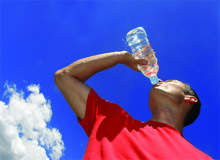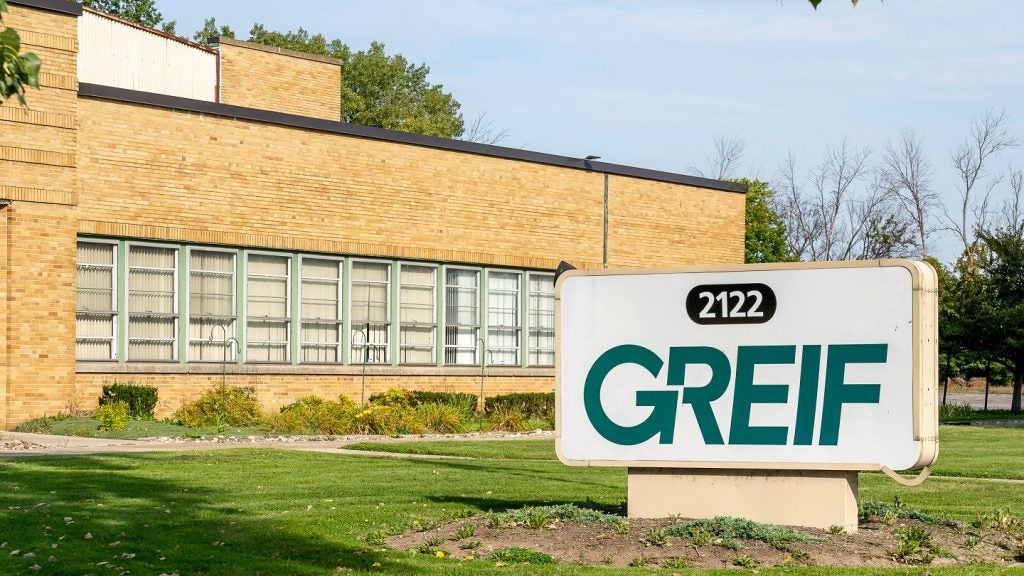
In the face of an industry-wide attempt to reduce packaging for food and beverages, consumer demand continues to drive up volumes of packaging across all material types in Europe.
Although in a number of European markets consumers view products as being over-packaged, there is very little evidence to suggest that these opinions actually alter consumer behaviour, and most continue to buy products with packaging that offers convenience, protection, preservation and brand differentiation when actually in store.
Euromonitor International puts growth of retail packaging at just over 3% in 2006, with forecast growth of 2.7% for 2007, indicating that growth in packaged products and consequent packaging demand is set to slow, but nonetheless continue.
RUSSIA AND EASTERN EUROPE
In the less-developed markets, improvements in spending power and the development of retail infrastructures are bolstering sales of packaged food and drinks.
Russia alone contributed an additional $12bn in food sales in 2006, equivalent to 32% of the European total. Greater penetration of refrigerators and freezers both in households and in stores led to strong growth in chilled and frozen food, exacerbated by a shift towards packaged foods.
How well do you really know your competitors?
Access the most comprehensive Company Profiles on the market, powered by GlobalData. Save hours of research. Gain competitive edge.

Thank you!
Your download email will arrive shortly
Not ready to buy yet? Download a free sample
We are confident about the unique quality of our Company Profiles. However, we want you to make the most beneficial decision for your business, so we offer a free sample that you can download by submitting the below form
By GlobalDataConfectionery is also witnessing upward movement in the Russian market, thanks to the introduction of a number of value-add products like functional power mints and vitamin-enriched sugar confectionery. The confectionery market is increasingly polarised within Russia however, as low-cost imports from neighbouring CIS countries sit alongside premium functional confectionery on the shelf.
Flexible packaging has a stranglehold on this market segment, but will face competition from paper and rigid plastic in coming years, as confectionery manufacturers adopt new designs in the attempt to counterbalance a projected slowdown in consumption.
Less developed markets like Russia are witnessing gains in the pouch segment in liquid foods, with Unilever‘s introduction of Calvé brand sauces gaining share in the sauces category. Pouches are making inroads into the dried food segment, with coffee and confectionery registering growth of 9% and 13% respectively in 2006.
Furthermore, demand for convenience in packaging is also making itself felt in areas like cheese and processed meats, notably in Spain and Italy where consumers are opting for pre-packaged, pre-sliced products and moving away from the deli counter.
GOOD TIMES FOR PET / PP
Within the wider European market, historically, rigid plastic containers were the most dynamic packaging format for food and beverages in incremental terms, underpinned by growth in PET for bottled water and HDPE and PP in the yoghurt market.
Future indications are that as such products attain widespread household penetration, flexible packaging will take over as the fastest-growing packaging format.
‘Grazing’ and eating on the go are expected to drive up consumer demand for sweet and savoury snacks, single-serve bakery products and confectionery between 2006 and 2011, thereby bolstering growth in flexible packaging. Euromonitor International predicts a slowdown in growth for rigid plastic packaging between 2007 and 2011, but the success story is by no means over.
PET will continue to make gains in bottled water, with forecast growth to 2011 of 29%, while continued health consciousness will drive up sales of PP and HDPE for spoonable and drinking yoghurt. Beer is also anticipated to offer solid growth opportunities for PET, notably in the Russian and Ukrainian markets, together expected to advance beer in PET by an annual average growth rate of 5% between 2006 and 2011.
Ready meal trays are also a high-growth packaging format, with expectations that France, Italy and Russia will be instrumental to regional growth, helping to ease the dominance of the UK on ready meal tray demand. Sales of ready meal trays are expected to grow by 4% a year on average over the next five years, with improvements in meal quality, a greater range of meal types, wider retail distribution and consumer demand for foods that are quick and easy to prepare, all helping to elevate demand.
GLASS AND LIQUID CARTONS
The glass sector has witnessed tough times in Western Europe, with heightened competition against lighter and less-breakable packaging solutions like plastics causing an overall downturn in glass usage in food and beverages. Glass-delivered carbonated soft drinks, water and milk together fell 27% between 1998 and 2006, equivalent to almost 6.3 billion fewer bottles sold in the retail market in 2006 compared to that of 1998.
The glass industry has recouped some losses through gains made in cooking sauces, but sales for beverages are increasingly shifting reliance to the East, through greater sales of beer in emerging markets like Russia, the Ukraine and Turkey.
Within liquid cartons, Euromonitor International expects almost six billion more packs to be consumed in 2011 compared to 2006, translating to growth of 12%. Faced with a challenging operating environment in the mature milk and juice sectors, liquid carton suppliers like Tetra Pak and SIG Combibloc have diversified and gained smaller volumes from new applications in ambient vegetables and sauces.
However, in the European market, incremental growth in liquid cartons will continue to be driven by dairy drinks and juice. Eastern Europe represents strong forecast potential for liquid cartons in juice, expected to account for almost four times the unit volume gains compared to dairy products and foods.
THE HEALTH-CONSCIOUS CONSUMER
While snack products represent strong growth categories for folding cartons, the industry has been influenced by health-conscious consumers looking for healthier snack products that can be eaten on the move. This has led to an influx of low-fat and low-sugar products, offering brand owners the opportunity for increased margins and also leading to greater segmentation of the market.
As such, a number of snacks in cartons have entered the market, including multipacks of snack bars and ‘health-oriented’ biscuits. Flexible packaging has also benefited from this trend, but there has been some solid overspill into folding cartons.
Health awareness has also influenced sales of food packaged in metal. In beverages, cans have witnessed a resurgence, with beer and carbonates returning to growth in sales as overall consumption levels have improved and functional drinks like Red Bull have aided sales.
Conversely, food can sales have been considerably less dynamic, suffering from an old-fashioned image, with consumers switching to chilled and frozen foods.
Canned / preserved foods are also witnessing a challenge from other packaging formats, notably pouches and, to a lesser extent, liquid cartons. Bucking this trend has been canned fish / seafood, with both economy and premium products performing well.
ALL FORMATS BENEFIT FROM DEMAND
The forecast for the European packaging market is bright and all packaging formats are expected to benefit from increased product demand. Success stories are expected to be felt in rigid plastics and flexible packaging, although in light of current debates on light weighting and polymer choice, packagers are expected to instigate a lower volume weight per unit.
Euromonitor International forecasts growth of 12% between 2006 and 2011 for total European retail packaging in unit terms, culminating in a total of 892 billion packaging units sold in 2011.







